Best tube amps 2025: The finest tube-driven heads, combos, and lunchbox amps on the market
Manufacturers such as Blackstar, MESA/Boogie, and Fender are designing a bright future for tube tone, using technologies old and new

For all the technological advancements we've seen in guitar amplification, the tube amp remains, for many guitarists, the platonic ideal. Of course, no one could argue that amp modellers and digital alternatives to the vacuum tube aren't getting closer to the real thing all the time, but for many players finding the best tube amp is still the main goal in the quest for tone.
In this guide, we'll look at old-school combos inspired by the tones that helped launch the electric guitar into the pop-cultural firmament. We'll also look at those tube amplifiers that acknowledge the limitations of time-honoured designs and bring onboard intelligent digital technology to compete with the rising tide of innovation that makes the amp modelling market so exciting.
That we have something for every budget is also a testament to the health of the tube amplifier as a concept. It suggests that players of all ages and levels are inspired by the idea and that mysterious, glowing glass valves still hold a certain magic for guitar players, even though they're a hangover from early 20th-century technology, and we're now living in an age of digital transformation.
Best tube amps: Our top picks
Some might pooh-pooh the tube amplifier as being a one-trick pony, but that’s baloney. The Blackstar HT Club 40 MkII 6L6 will do a job for any electric guitar player. Play jazz on it by all means. Play the blues. But it has enough gain on tap to please metal players, too, and is utterly convincing no matter how you like your sound. A triumph of modern amplifier design, it’s also eminently affordable.
It’s such a Harley Benton power move to use its efficiencies of scale (the brand is owned by German retail titan Thomann) to put together a piece of gear like the Harley Benton Mighty-15TH at such a low price. In a blindfolded taste test, this would hold its own against amps in the next price bracket and above, with an overdriven voice that’s seasoned beautifully by the EL84 hot sauce under the hood. Forget the price, the Mighty-15TH is an addictive, fun and musically inspiring amplifier.
Best tube amps: Product guide

Specifications
Reasons to buy
Reasons to avoid
Who says that a top-quality tube amplifier can’t be priced for beginners, students and any of us who are watching the bottom line? This, of course, is Harley Benton’s special power. We’ve seen it in action with the company’s line of electric and acoustic guitars, and to see it here on an all-valve lunchbox head is most thrilling. Before we talk tone, we have to mention the build. The Mighty-15TH has a precision-folded steel chassis, with electronics mounted on a double-sided PCB that’s through-plated for durability. When you switch the Mighty-15TH on, you’ll get a nice surprise – there’s no noise.
This bodes well, and positions this priced-for-practice lunchbox head as a potential ally for studio recordings. The tones don’t disappoint. Under the hood, you have a pair of Ruby Tubes EL84Cs in the power amp that lend the Mighty-15TH a tweed-esque character once the tone starts to break up a little. This is where the Mighty-15TH really gets going. The cleans are lovely and detailed, but the crunch is something else. Musical and addictive, it’s a remarkable feature for an amp of this price.
The switchable power setting allows you to dial this down to 7W and reach that break-up a little sooner – ideal for the home or studio. But at a full 15W, we think you’ll appreciate the headroom. There’s an onboard boost that sadly isn’t footswitchable. That’s the only fly in the ointment, and it’s not much to complain about. Not when you’ve just dropped 200 bucks on an amp that would blow some higher-priced competitors out of the water. The Mighty-15TH has a 5W sibling – the Mighty-5TH – that might tempt those who are playing at home. But the 15TH’s onboard boost (which is excellent), three-band EQ and extra power shade it for us. It’ll gig and record well.
Read the full Harley Benton Mighty-15TH review
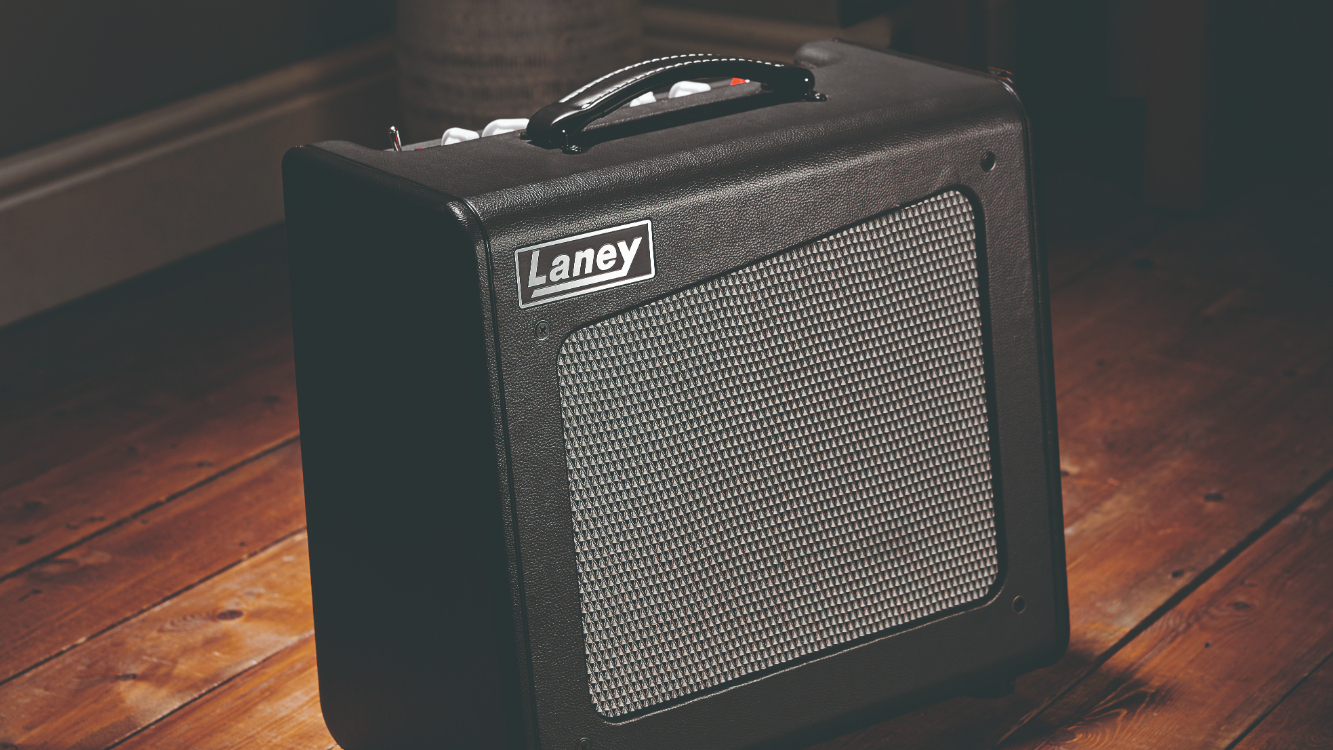
Specifications
Reasons to buy
Reasons to avoid
The Cub-Super12 is a paragon of value. Just look at this little cracker. There’s no way it should be priced under $525/£500, but here we are and it would be a crime if people missed out on it. Finished in a dark grey vinyl, this is a classy portable tube combo amp. With two EL84s flexing inside that power amp section, it has a pleasing roar when you’re generous with the volume. It’ll handle small gigs no problem, but afternoon practice sessions at home will also be a breeze, its onboard attenuator allowing you to plug into the low power output for a very domesticated 1W setting. This is ideal for practice, sure, but also for recording situations where you don’t want to put too much volume through a mic.
The classic design belies a contemporary sensibility, and, pleasingly, the Cub-Super12 takes to pedals well, offering an effects loop on the rear panel, with the floor show extending to its footswitchable digital reverb and onboard boost. The boost is magnificent, and makes a strong case that all tube amps in this class should have a similarly footswitchable feature.
Elsewhere, the digital reverb borrows the spring reverb algorithm from Laney’s Black Country Customs Secret Path pedal, and is quite exceptional – just the sort of decorative flourish that goes so well with hot tube tones characteristic of tweed-era Fenders. Low noise when you switch it on is another sign that everything is in order.
Read the full Laney Cub-Super12 review
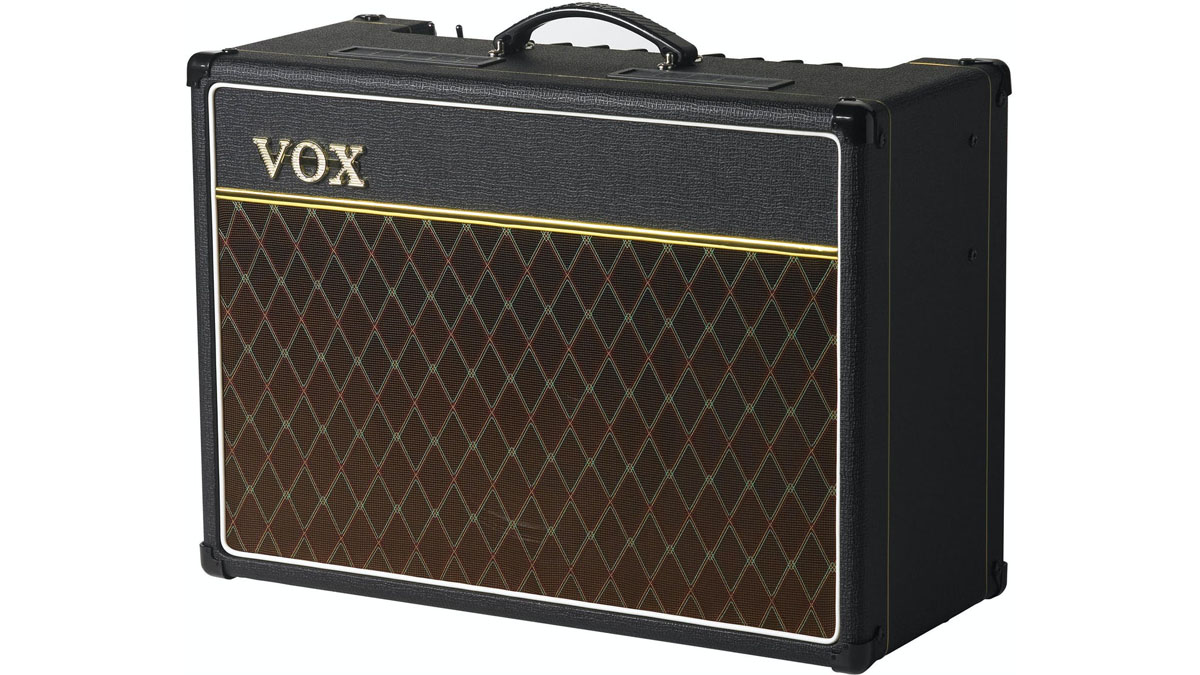
3. Vox AC15 Custom
Our expert review:
Specifications
Reasons to buy
Reasons to avoid
A veritable titan of British amp tone, the Vox AC15 built its reputation on the back of its articulate and dynamic chime, the sweet honeyed juice of its overdrive, and a hot, buttered midrange that’s just so moreish and musically nourishing. In a sense, the Vox AC series has a tone that exists unto itself; it’s one of the fundamentals, and it’ll do blues, rock, indie and pop. It’ll even make an excellent alternative to a Deluxe Reverb for country.
There’s more than enough power for gigs. Indeed, for a 15W 1 x 12” combo, the AC15 is loud, and that master volume will be seeing some action if you insist on playing this at home. There are two channels – Normal and Top Boost – but it’ll be hard to tear yourself away from the latter, and not simply because there’s no footswitchable option for channel surfing.
The Normal option is a bare-bones channel offering a single control for volume – however, further adjustments can be made via the global treble cut and master volume. It’s rich in crystal chime and will work nicely as a platform for your pedalboard. The Top Boost channel, meanwhile, offers the full bag of tricks, from a jangly chime that’s begging for a Rickenbacker 330, through some treble-rich sparkle and onwards to that naturally compressed overdrive. Wonderful stuff.

Specifications
Reasons to buy
Reasons to avoid
Some might argue that the second-generation HT Club 40 is the perfect guitar amplifier. Once you take into account the comprehensive feature set, the price and the performance, you might find yourself agreeing with them.
The HT Club 40 MkII 6L6 does the lot. It’s ideal for gigging players who might need a wide variety of tones – anyone who plays weddings or cover sets will love it. But a little tweaking reveals this jack of all trades to be a master for the specialists. Here, Blackstar has taken the two-channel format and expanded upon it, adding a very MESA-esque touch by applying voice switches on both channels.
The clean channel has been tweaked and sounds exceptional, offering a transatlantic performance that allows you to toggle between glassy US cleans and British chime, and it makes an excellent pedal platform. There’s plenty of headroom at 40W, but if you want to break up a little earlier, then the 4W setting is ideal.
Moving over to the gain channel, you’re presented once more with a US/British accent. Or, like a bad actor, you can find yourself somewhere between the two; just adjust the Infinite Shape Feature dial according to how American or British you’d like your tone to be, and it’ll change the response of the gain channel’s three-band EQ accordingly.
There’s plenty of gain under the hood. The HT Club 40 MkII 6L6 has more than enough for hard rock and most metal styles – and if you’re really looking to split the atom, just throw a dirt box in front of it. This being a contemporary design and build, you’ve got an excellent effects loop with a level switch to integrate your ’board. Meanwhile, out back, there’s an emulated output for direct recording or sending your signal to PA speakers. The HT Club 40 MkII 6L6 is so practical that it has no right to sound this good.
Read the full Blackstar HT Club 40 MkII review

Specifications
Reasons to buy
Reasons to avoid
The Orange Rocker 15 is the sort of amp you can get carried away with. There’s a lot going on here. There are two channels – Natural and Dirty. As you would expect, or indeed demand, from any amplifier bearing the Orange name, the Dirty channel is not easily housetrained. It dares you to keep turning it up, starting with EL84 chime and sparkle, and progressively adding grit, demonstrating why they named it the Rocker 15. That said, at lower gain levels it’s a formidable choice for blues, and that bright EL84 sparkle is excellent for all flavours of indie and rock, with the Dirty channel’s powerful three-band EQ offering plenty of range.
The Natural channel is exactly that. We often talk about transparency with regard to tone, but this channel simply presents you with a sole volume control and goes through no EQ before it hits the speaker, making it a perfect platform for pedals, or for simply having an uncoloured channel capture the sound of your playing and your guitar.
Designed by Orange’s technical director, Ade Emsley, the Orange Rocker 15 has an all-valve signal path and can be operated at 15W or scaled down to 0.5W for bedroom playing – another example of a tube amplifier being both faithful to the tradition of guitar amp design and conscious of today’s player’s needs. Orange is clearly also conscious of your budget – hence why this amp is an absolute steal.
Read the full Orange Rocker 15 review
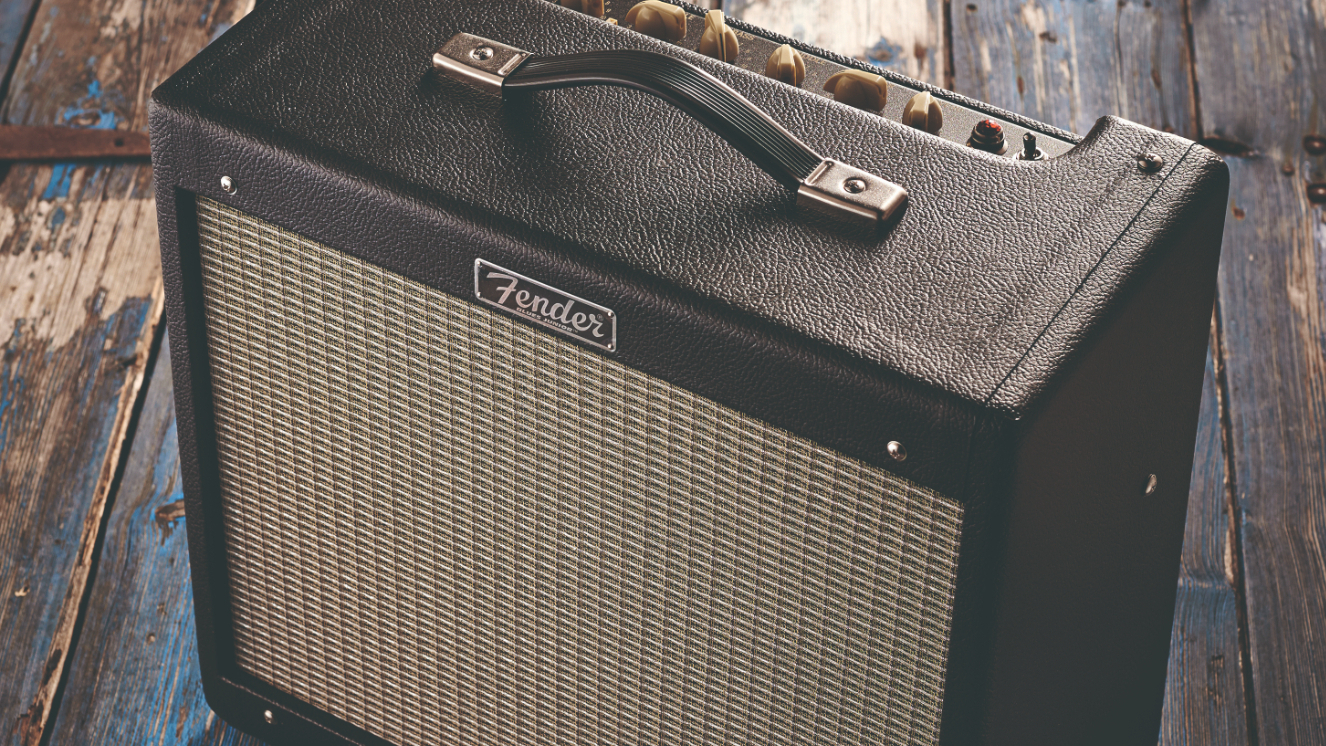
Specifications
Reasons to buy
Reasons to avoid
It’s for good reason that the Blues Junior is as ubiquitous in guitar circles as the minor pentatonic scale. It offers exceptional performance for the money, delivering incredible Fender cleans – all elastic spank and dynamic chime. And when you get a little fresh with the volume, it’ll respond with hot, raunchy drive tones that’ll appeal to a range of players.
Sure, the Blues Junior does blues – the name suggests as much. But you could use this for country, rock, indie, whatever. At 15W, it makes a decent pedal platform and is a good size for both the home and small gigs – though if your drummer is a heavy-hitter built from creatine, you might struggle for headroom.
The simplicity of its design is one of the Blues Junior’s great assets. You’ve got a single channel with chickenhead dials controlling volume, a three-band EQ, master volume (invaluable for bedroom players) and reverb. If you need to beef things up, the Fat switch will pour some tonal concrete into that low end and give your tone a little more oomph – not unlike the tubby response you’d find on a Bassman.
Of course, the Blues Junior is a lot more portable. Inside a ¾”-thick particle board cabinet with the proportions of a ’50s-era narrow panel tweed amp, you’ve got a most excellent 12” Celestion A-Type speaker that endows the Blues Junior with wide, articulate voice. And if you find the stylings of the regular edition a little staid, there are all kinds of special runs on the market, of which the lacquered tweed remains the coolest.
Read the full Fender Blues Junior IV review
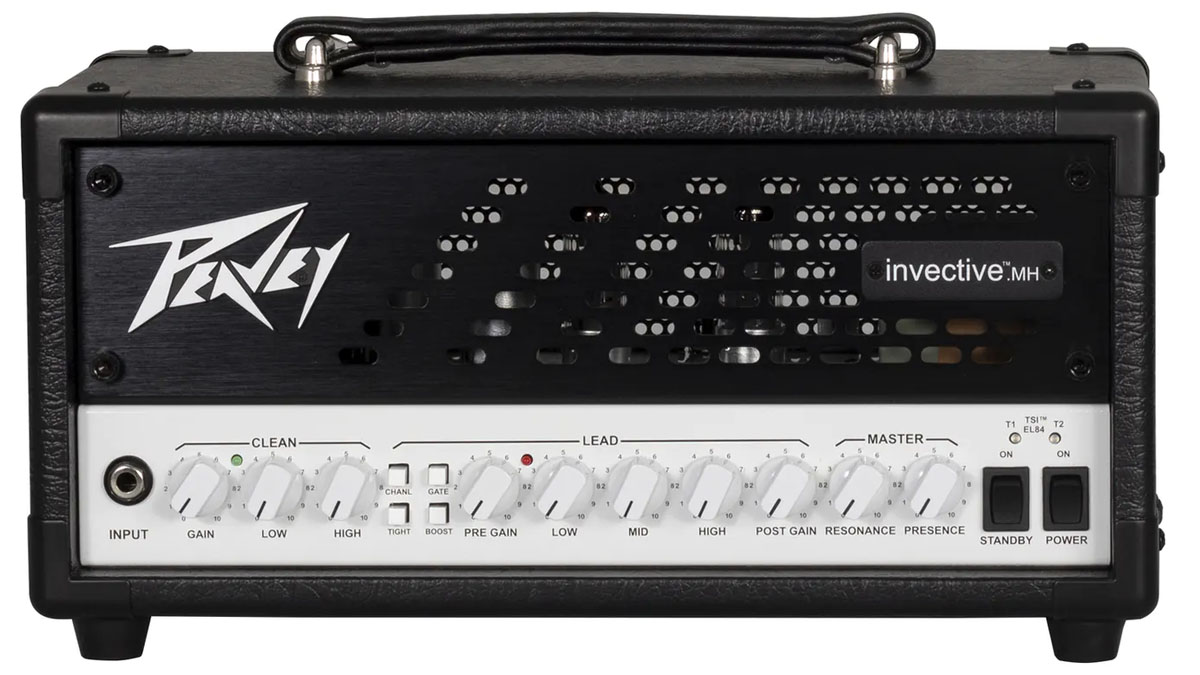
Specifications
Reasons to buy
Reasons to avoid
Not everyone is in the position to acquire one of Misha Mansoor’s full-sized signature Peavey heads and get the best out of it. At 120W, it could strip paint and plasterboard off the walls if you were to fire it up in your bedroom. And even when playing a gig down the Fox & Djent, it’ll out-muscle everything in its path, sending glasses flying off the gantry. But the Invective MH? Well, that we could make work.
The MH stands for mini-head, and that’s what you get – a downsized, more manageable version of the original. The Invective MH comes in a two-channel lunchbox format with a maximum power rating of 20W, which can be scaled down to 5W or a single watt. At full toot, this thing is a fire-breather, but what makes it so attractive is that it readily flexes its high-gain muscle at any of the three power stages.
With a built-in noise gate, you can get some feral tones out of the Invective MH without unwanted hiss – ideal for when you’ve got a mic in front of the cab for recording. But then, with its speaker-simulated USB, it’s similarly well suited to going direct to your DAW. There’s also a cab-emulated output with XLR and a ground-lift control for going direct when playing live, making it a super-compact and portable fly rig. There’s a headphones output, too, putting silent practice on the menu (explore our guitar amp headphones guide for compatible cans).
Tone-wise, the Invective series is based on Peavey’s legendary 6505, with super-clean cleans, a crisp, chewy drive, and an industrial grind when maxed out in the gain stages. But think about Mansoor’s tones. He resists the urge to steamroller everything with super-saturated gain, and there’s detail to the Invective. You’ll hear all the notes, making you glad that you learned those complex add11 arpeggios after all.
Read the full Peavey Invective MH Mini Head review
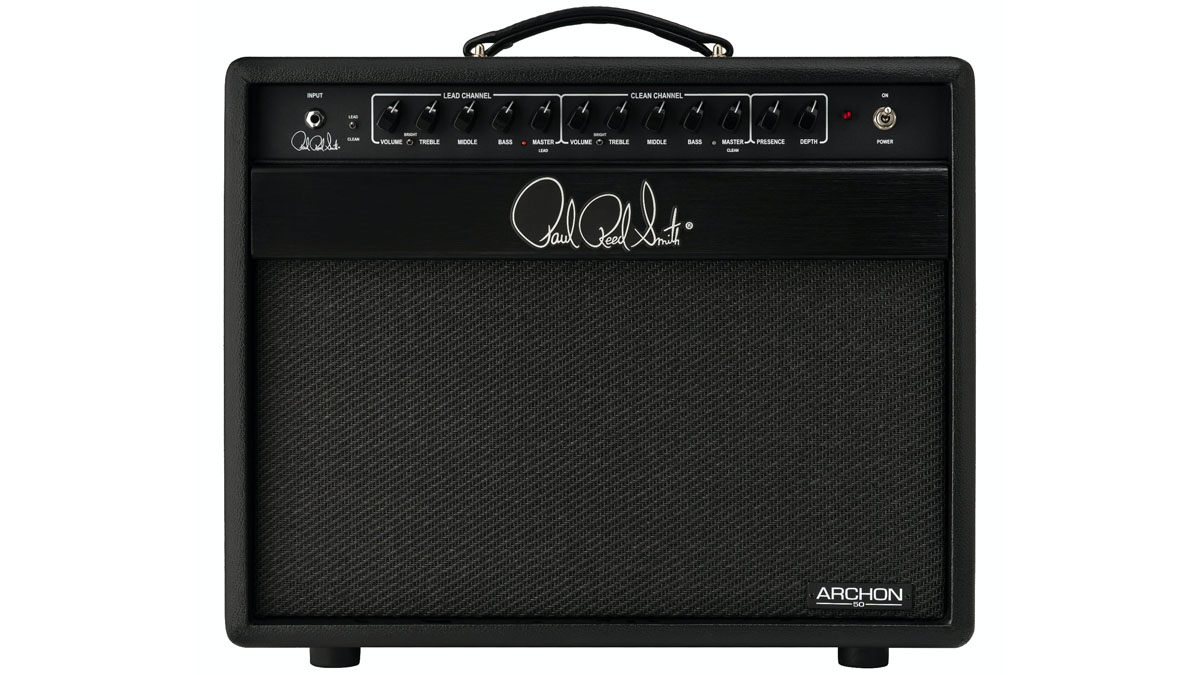
8. PRS Archon 50W Combo
Our expert review:
Specifications
Reasons to buy
Reasons to avoid
When PRS launched its 100W Archon head in 2014, it was a statement of intent. It was well designed, simple to set up and versatile. However, its USP was the level of gain it could supply for metal, with an impressive mid-range and an abundance of harmonic sweet spots.
Since then, we’ve seen a 25W combo, a 50W Archon head – and now this new 50W combo has been added to the series. The Archon complements its superb high-gain voice with some truly exceptional cleans that, PRS says, have earned it a loyal band of country players who favour the amp for its headroom and articulate sparkle.
That sounds surprising on the face of it, but a quick run through the Archon 50W’s features will open up a number of musical opportunities. This being the 21st century, it’ll work gangbusters with your pedalboard. If you dime it, the overdrive will sound hectic without being shrill or mushy.
Under the hood, a pair of 6CA7 power tubes give the Archon a response that sits somewhere between classic British and US tube amplifiers. Sometimes, amps sell themselves on that one thing they do better than anyone else. Others, such as the Archon, offer a blank slate for the adventurous guitarist. This could be the ideal amp for the Nashville session picker with an always-on Dyna Comp. This could be the death metal guitarist’s choice for tracking with a three-dimensional high-gain tone that reveals all the notes in a downtuned chord. Indeed, this could be anyone’s amplifier, and that’s pretty exciting.
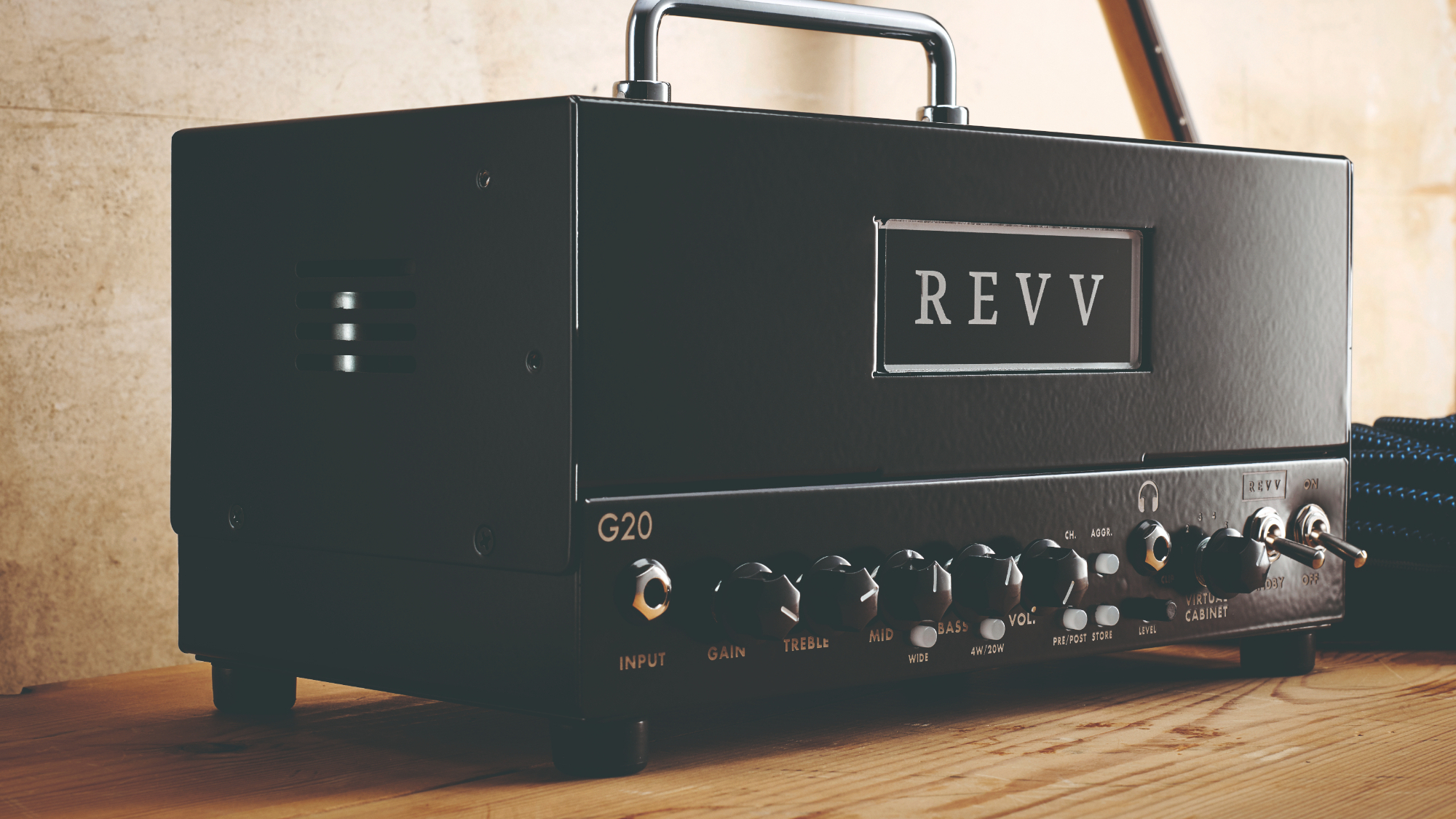
Specifications
Reasons to buy
Reasons to avoid
With the Revv G20, it’s important not to mistake its lightweight design for a sign of weakness. This is an amplifier with some of the most fierce high-gain tones you’ll hear, and it’s designed to be all you really need for live performances or recording.
With onboard Two Notes Torpedo reactive load technology, you can send this directly to a PA when playing live, or straight to a mixing desk or audio interface when recording. It comes preloaded with six impulse responses – or 128 when connecting via MIDI – and you can, of course, customise these to suit your sound. What about another neat trick? Well, the G20 has a pair of 6V6s in the power section, but you can switch those up and change the response and character of the amp without opening the aluminium enclosure, all by using the Two Notes simulated power feature.
The future of tube amplifier designs lies with such an embrace of technology. It refutes the arguments that say the tube amp design is impractical. As for the sound, you’ve got heaps of gain, of course. But it’s more than that. You can tighten it up via the Aggression switch. The Wide switch applies a quick global EQ fix to fatten up your sound – ideal if you’re the only guitarist in the band and want to dominate the mix. And with all these mod cons, it won’t surprise you to learn that there’s a buffered series effects loop. Revv has thought of everything.
Read the full Revv G20 review
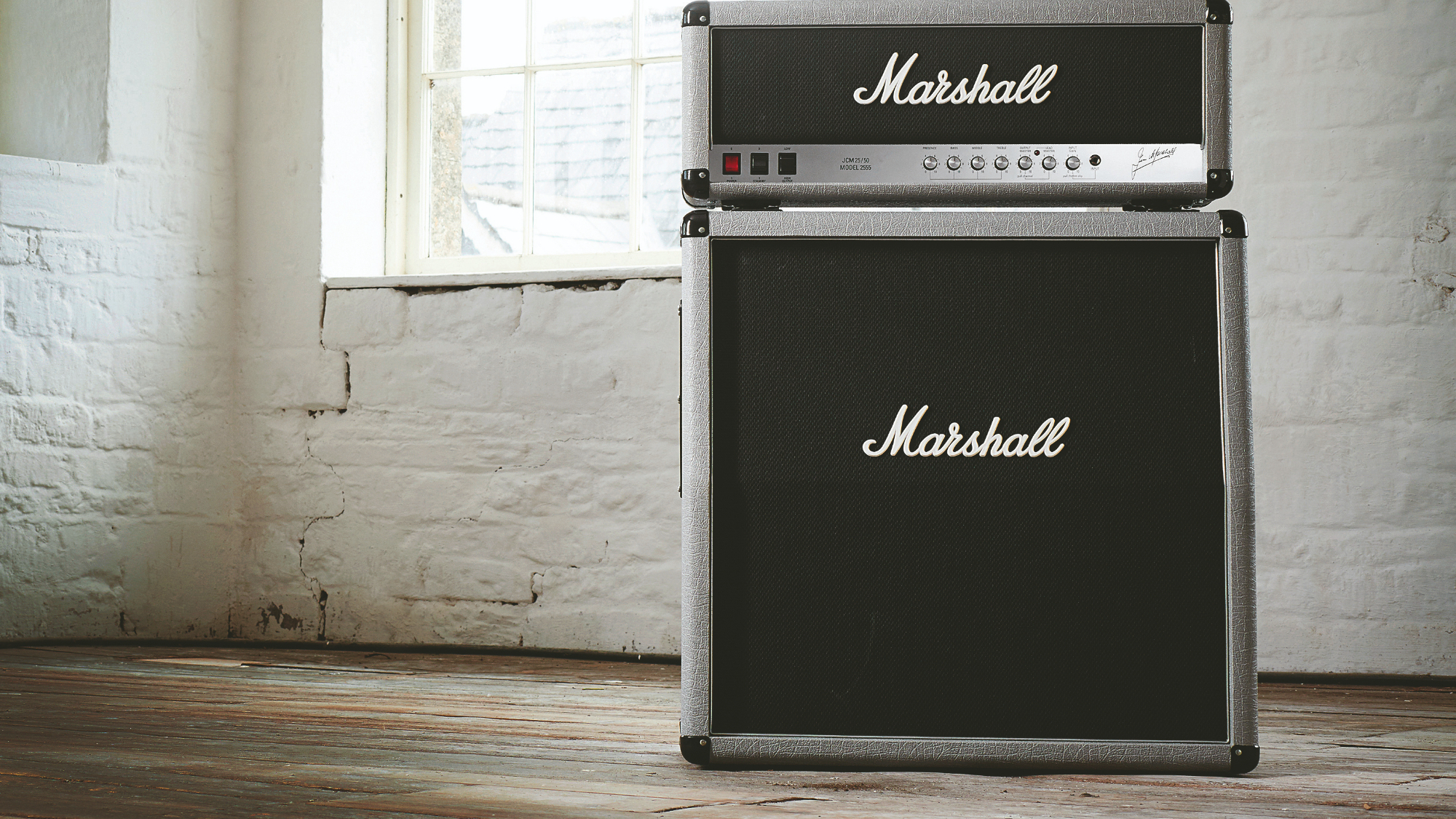
Specifications
Reasons to buy
Reasons to avoid
The Silver Jubilee was first released in 1987 to celebrate 25 years of Marshall amps. As limited-edition amplifiers are wont to do, it came and went. But not before Slash had changed the course of musical history by recording one of the finest and best-selling rock albums of all time, Guns N' Roses’ Appetite For Destruction.
To all intents and purposes, the Silver Jubilee is the Slash amp. Fix yourself a Jack and Coke, dial in a generous level of crunch, select the bridge humbucker on a Les Paul and dig in. Just as all great electric guitar tones do, the Silver Jubilee will spirit you away to Sunset Strip on a magic carpet of sleazy overdrive. Alternatively, stick a distortion/boost pedal in front of it and you’ll have a Kerry King-esque slayer tone – and a Judas Priest-style British crunch is only a turn of the dial away.
One advantage the Silver Jubilee holds over, say, the JCM800 from which it was spawned is the harmonically enhanced distortion that comes courtesy of a diode-clipping circuit Marshall designed using a pair of LEDs. Marshall, in effect, hot-rodded one of its own at source and created a cult classic.
Not to be overlooked are the clean tones. For an example of those, see the work of John Frusciante circa Californication. We’re sure you’ll agree that they’re quite something. But then Marshall cleans have always been overlooked, even when Frusciante and Hendrix’s oeuvre suggests otherwise. For some, the silver Tolex will be a little bright, but Marshall – having seemingly admitted that this is one of the best amps it’s made – has released Black Snakeskin and Black Elephant Grain versions. No matter how you dress it up, the Silver Jubilee is a beast.
Read the full Marshall 2555X Silver Jubilee review
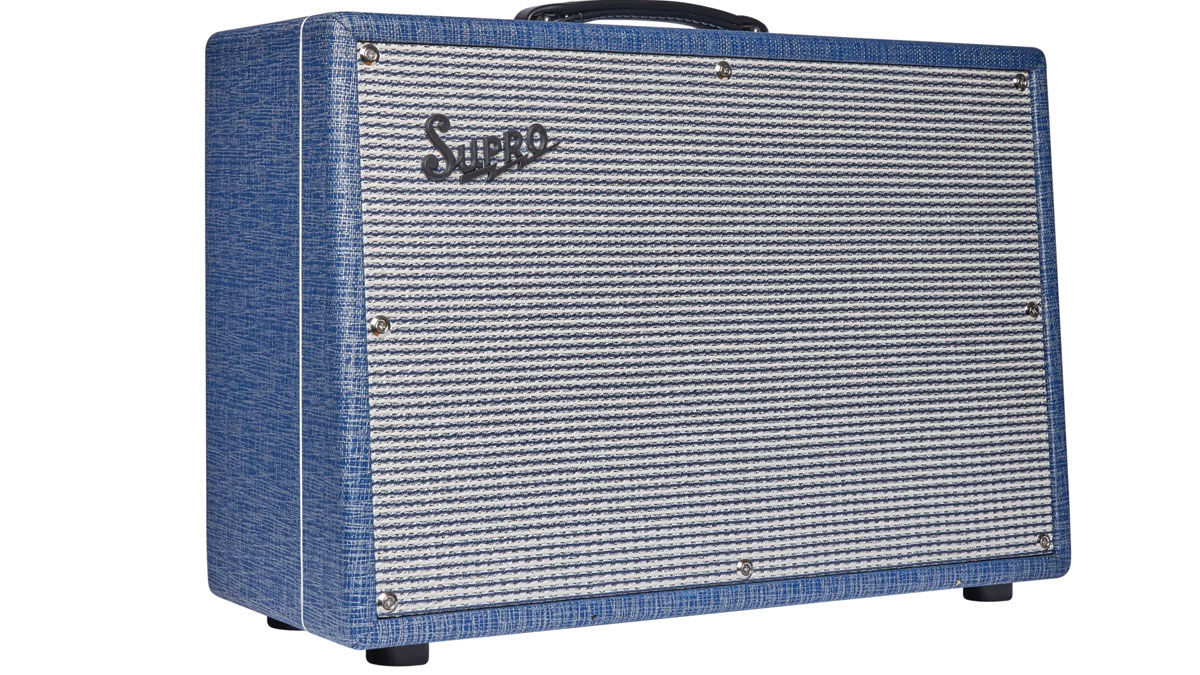
11. Supro 1968RK Keeley Custom 12
Our expert review:
Specifications
Reasons to buy
Reasons to avoid
The golden age of pedals deserves a new breed of pedal platform – preferably one with headroom, a nice transparent effects loop, and a sumptuous underlying tone with a solid bottom end and musical presence… Well, what do you know? It has one. Technically, it has two.
The Supro 1968RK Keeley Custom 12 is a revised version of the 1 x 10” combo that Robert Keeley of Keeley Electronics developed with Supro. Bearing the same stylish finish as the original – custom Blue Rhino Hide Tolex, silver/blue grill cloth, white piping and dog bone handle – it looks and feels like an exceptional piece of kit.
The effects loop is designed as a fully transparent cordon sanitaire for your modulation pedals, taking them out of the way of your gain pedals and the amp’s preamp gain stage to keep the signal true, while the front end of the amp will welcome whatever overdrive/boost, distortion or fuzz pedal you can throw at it. Considering the quality of the build, the price is attractive too.

Specifications
Reasons to buy
Reasons to avoid
The Princeton Reverb has long established itself as a firm favourite of gigging and studio players alike. There’s something about its compact size and adequate power that makes it suitable for a variety of situations. And the tones? Well, they’re an exemplar of Fender amplification, with substantial low-end integrity, crystalline treble detail, plus plenty of warm heat and grit when you get that volume dial up past noon.
The Princeton Reverb will bring out the best in the Fender catalogue, offering spanky, elastic tones with the Strat and twang on tap with the Tele. Got a Jazzmaster? Then dime that beautifully tuned reverb and head for the surf. To be honest, it plays nicely with guitars from across the spectrum, and this ’68 Custom reissue of the Silverface-era Princetons has been revised to make it work well with your pedalboard.
Fender has also reduced the negative feedback on this reissue model so that the overdrive comes a little quicker, and it remains a lovely touch-sensitive amp. The more you dig in, the more it breaks up. You can get some fantastic tones from diming it and taming the volume via your guitar.
There are two inputs on the front panel, one of which is padded to take 6dB off your input gain – a neat way of getting a little more headroom when using humbuckers. And you have a simple complement of dials, including Volume, Bass, Treble and Reverb, with Speed and Intensity controls for the onboard tremolo. Under the hood, you’ve got custom-made Schumacher transformers, three 12AX7s and a 12AT7 in the preamp, a single 5AR4 rectifier, and a pair of 6V6 power tubes. The cabinet is made of seven-ply birch maple and seats a 10” Celestion Ten 30. The reverb and tremolo are footswitchable.
Read the full Fender ’68 Custom Princeton Reverb review
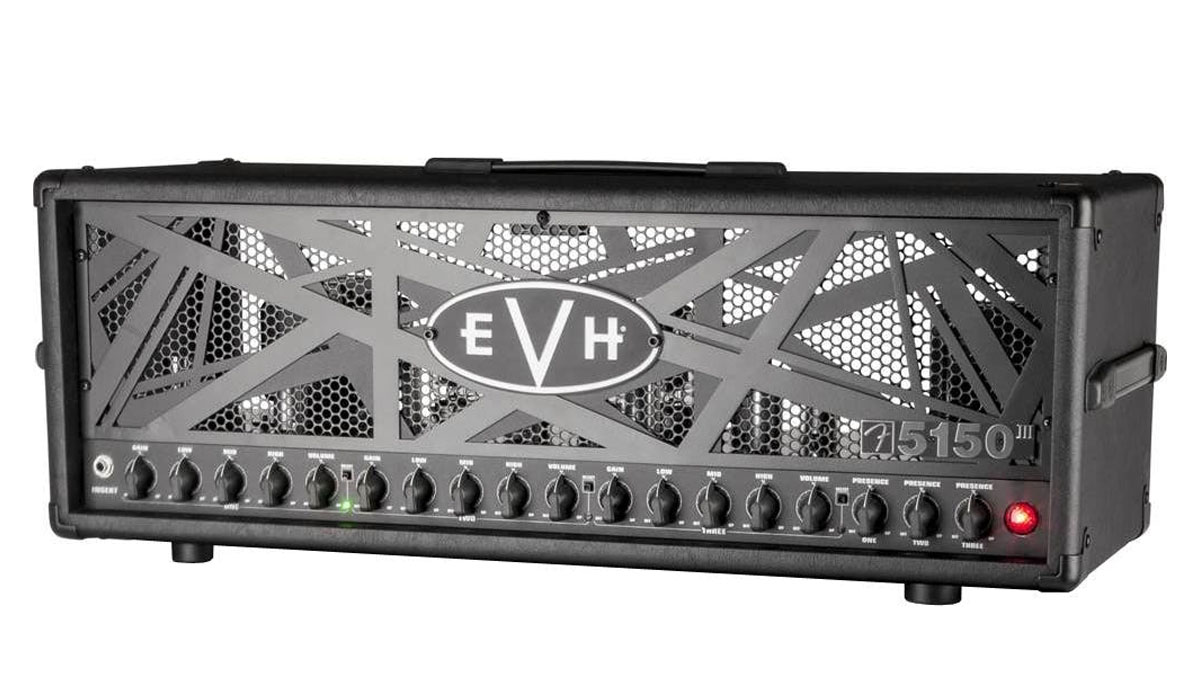
13. EVH 5150III 100S Head
Our expert review:
Specifications
Reasons to buy
Reasons to avoid
The EVH 5150III 100S Head has been the go-to choice for a generation of hard rock and heavy metal guitar players, who make full use of its ability to remain dynamic, musical and articulate even when it’s going thermonuclear with the gain. This is one of the ways the likes of Gojira get their crushing tones.
But the 100S offers a little twist on the 5150 recipe. It’s spec’d up as per Eddie Van Halen’s touring amplifiers, so what you get is what you heard during Van Halen’s final concert performances. That means you can solve a huge part of the tone puzzle when looking to put that Brown Sound into action.
Yes, it’s overpowered for the home. Some of the smaller EVH heads – the lunchbox versions in particular – make more practical options for many of us. The pros, however, who need this to circulate some air in the studio or arm their backline with an impeccably well-tuned high-gain guitar amplifier, will surely love it. And the three-channel set-up makes it more than just a hard-rock flamethrower. The overdrive is chewy and bluesy – it’ll fry your rhythm parts to a crisp – and the cleans have a Fender-esque bounce.
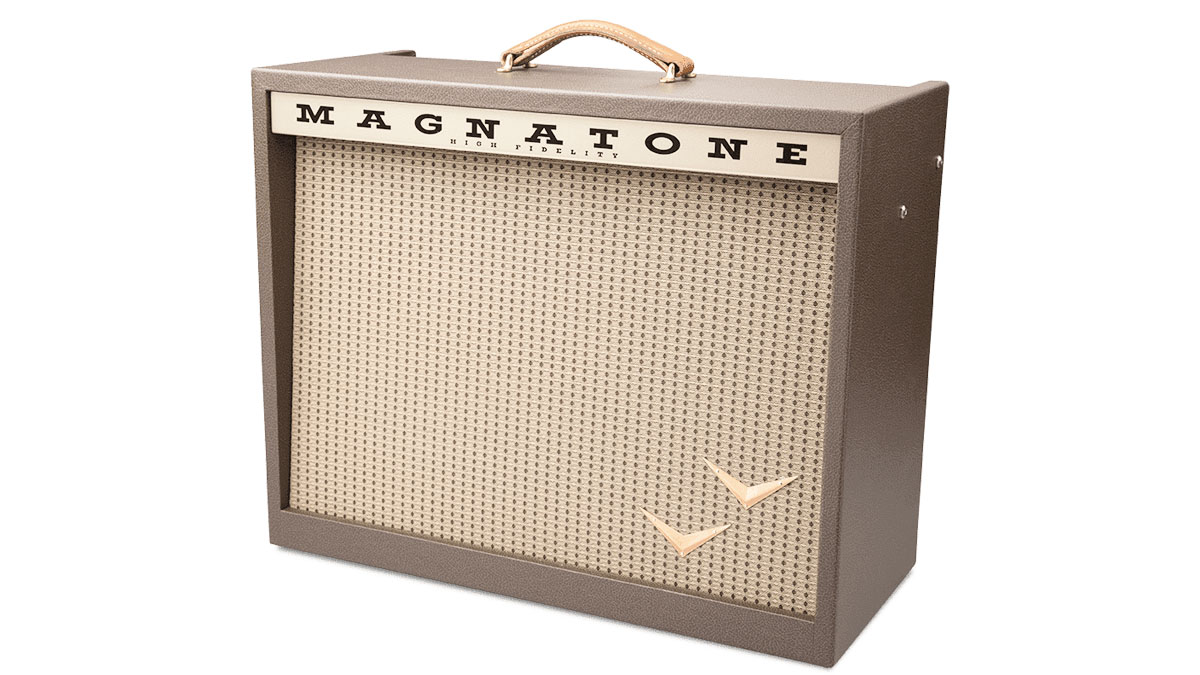
14. Magnatone Panoramic Stereo
Our expert review:
Specifications
Reasons to buy
Reasons to avoid
The resurgence of the Magnatone brand is one of guitar amplification’s biggest success stories of the past 10 years, and the Panoramic Stereo is arguably the model that epitomises what the brand is all about. Finished in vintage brown Tolex and gold, with a cream and brown control panel, the amp uses two EL84s to push a pair of 10” Magnatone speakers with 12+12W of all-stereo power. This allows it to present a dynamic frequency range with an incredible depth and width of tone, all from a compact combo.
But the pièce de résistance comes via the effect that sets Magnatone apart from competitor models built by Fender et al – the true pitch-shifting vibrato. The varistor control on the Panoramic Stereo is switchable to a more traditional amplitude-modulating tremolo, but there’s every reason to suspect you’ll fall through the rabbit hole with what Magnatone has trademarked as True Dimensional Sound.
And that it is. The vibrato adds a wonderful sense of movement and depth to your tone, and it’s enhanced by the stereo spread. The queasy seasick quality of the vibrato, the optional warble of the tremolo, the warm, balanced cleans, the smooth drive allied to the splashy wash of the full-length Accutronics reverb tank… It’s a heady mix. These amplifiers are still hand-wired in the US, so it’s no surprise that they’re expensive. But if you’ve been putting away the pennies in your jar and you’re looking for something special to unleash on the blues/country/rock continuum, then you won’t be disappointed.
Best tube amps: Buying advice

What to consider when buying the best tube amp for you
MusicRadar's got your back
As with any type of gear, some tube amps are for the specialists, while others play the field and offer a tabula rasa for the adventurous guitar player to explore. Whichever category you fit into, before buying anything, think about where you’re going to be using it.
How loud should my tube amp be?
The vagaries of tube amplification are such that these amps often need to be played loud – with those power tubes operating in the aerobic zone, so to speak – to get the best out of them. That’s when they’ll naturally compress, and you’ll find those harmonic sweet spots as the signal breaks up into overdrive. Players talk of the amp ‘opening up’, and when you dime an amp with valves in the power stage, you’ll appreciate this phenomenon.
With that in mind, guitarists who are going to be playing at home and don’t wish to upset the neighbours should look at smaller tube amplifiers, or those that have onboard power scaling that allows you to take the amp down to 5W or less. That way, you’ll be able to access that tube magic without taking the paint off the walls. For the home, a 2 or 1W setting would be ideal.
The other side to the size argument surrounds the issue of headroom. If you’re playing with other musicians and want to keep your tone clean, you’ll want a tube amplifier that can get loud without going into overdrive. Those wishing to integrate their pedalboards often prize amplifiers with plenty of headroom – again, it’s like a blank slate; basecamp for building a sound.
Should I go for a tube head or combo?
Each type of tube amp has its benefits. Some players will love the convenience of a combo, having the speaker and the amplifier housed in one unit, ideally with additional speaker outputs that enable them to expand their rig. But that doesn’t necessarily make for the most convenient option. Say you own a cab – you can acquire a couple of amp heads and switch them up when it suits. If you’re gigging or hitting a rehearsal space, there may be a cab already there, meaning you only have to take the head with you.
Also, the new breed of tube amps we’re seeing – typified here by the likes of the MESA/Boogie Badlander 50, the Revv G20 and the Peavey Invective MH Mini Head – feature onboard technology that allows you to go direct through an audio interface or a desk when recording, or to the PA when playing live. This imaginative hybrid of 20th-century tube tech and 21st-century digital innovation presents an exhilarating case for the future of tube amplifiers. Not only that, it offers a little more bang for your buck when these tools come online.
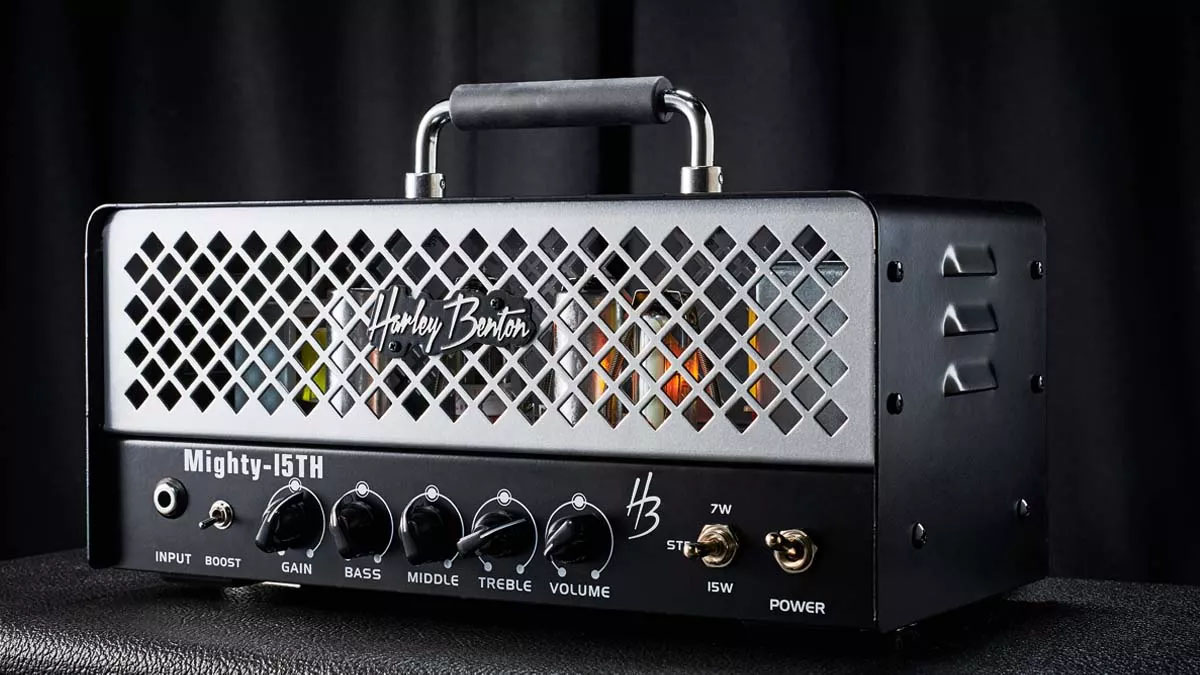
Traditional vs modern
It’s often the way that we don’t need the technology until we use it and find our lives enriched tenfold. We could foresee that happening with tube amps using onboard cabinet simulation, and in cross-brand collaborations such as that between Revv and Two Notes, on the most excellent G20.
Then you have the traditional designs reprised for the 21st century. How could anything as cool as the Fender Princeton, the Vox AC15 or the Magnatone Panoramic Stereo ever go out of style?
The products listed here are some of the best and brightest amplifiers on the market, and are a testament to why the tube amplifier remains the tonal ideal that digital technology aspires to.
Does the type of tubes affect the tone?
The short answer is yes. The tone is greatly affected by the type of tubes in the amplifier. For example, the EL34 - commonly found in Marshall and Orange amps - is known for its "British" tone. This tube produces a rich, smooth distortion that's become a fundamental part of rock 'n' roll.
On the other hand, Fender amps tend to opt for the cleaner 6L6 tube, which gives the Fender amps more substantial lows and highs, resulting in a more scooped mid, "American" sound. Obviously, there are many more tubes out there, such as the EL84 and KT66, but what is right for you is purely down to personal preference.
If you aren't sure which tube to go for, we suggest looking at what your favourite artists are playing through and using that as a starting point.
How we selected the best tube amps for this guide
Here at MusicRadar, we are experts in our field, with many years of playing, creating and product testing between us. We live and breathe everything music gear related, and we draw on this knowledge and experience of using products in live, recording and rehearsal scenarios when selecting the products for our guides.
When choosing what we believe to be the best tube amps available right now, we combine our hands-on experience, user reviews and testimonies and engage in lengthy discussions with our editorial colleagues to reach a consensus about the top products in any given category.
First and foremost, we are musicians, and we want other players to find the right product for them. So we take into careful consideration everything from budget to feature set, ease of use and durability to come up with a list of what we can safely say are the best tube amps on the market right now.
Find out more about how we test music gear and services at MusicRadar.
Related buyer's guides
- Best practice amps: tools for sharpening your chops
- Best small guitar amps: compact tube, solid-state and modelling amps
- Best metal amps: unleash hell with these heavyweight heads and combos
- Best budget guitar amps under $500/£500: top cheap amps for smaller budgets
- Best guitar amps under $/£1,000: heads and combos for rock, metal and blues
Want all the hottest music and gear news, reviews, deals, features and more, direct to your inbox? Sign up here.
Jonathan Horsley has been writing about guitars and guitar culture since 2005, playing them since 1990, and regularly contributes to MusicRadar, Total Guitar and Guitar World. He uses Jazz III nylon picks, 10s during the week, 9s at the weekend, and shamefully still struggles with rhythm figure one of Van Halen’s Panama.
